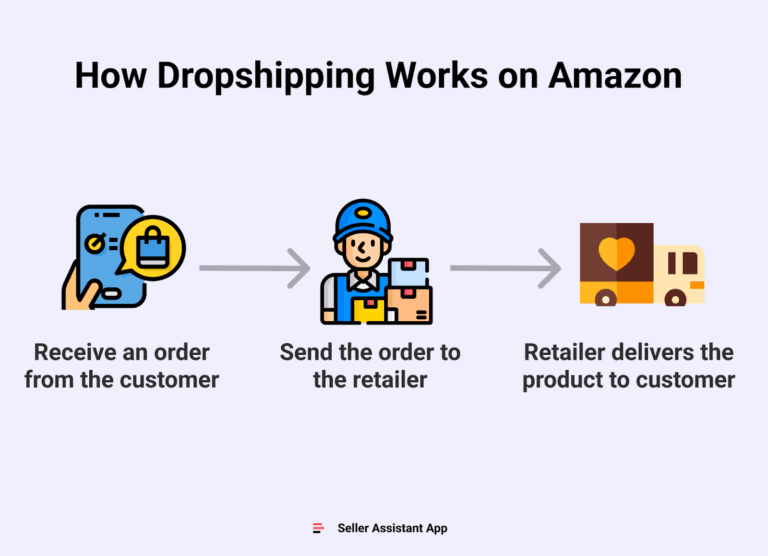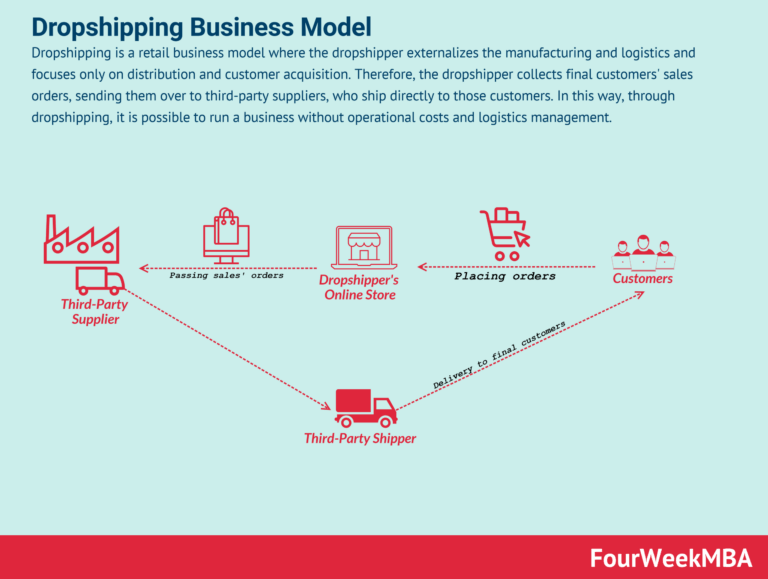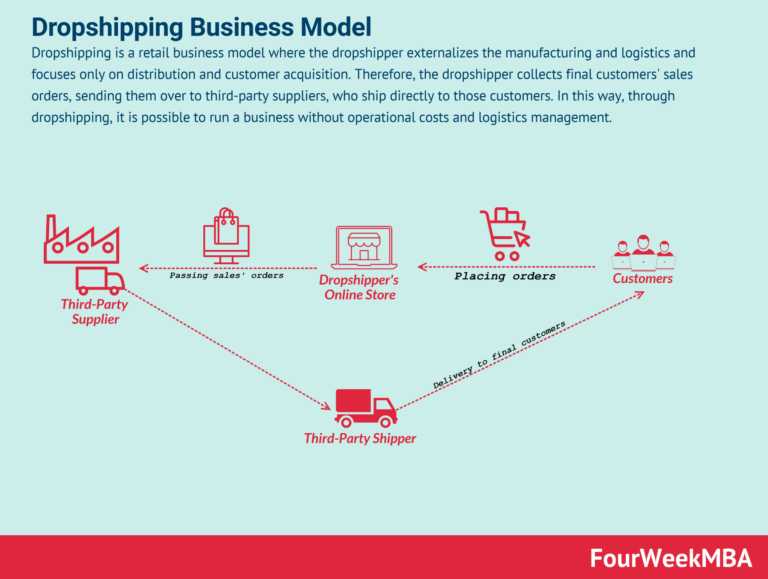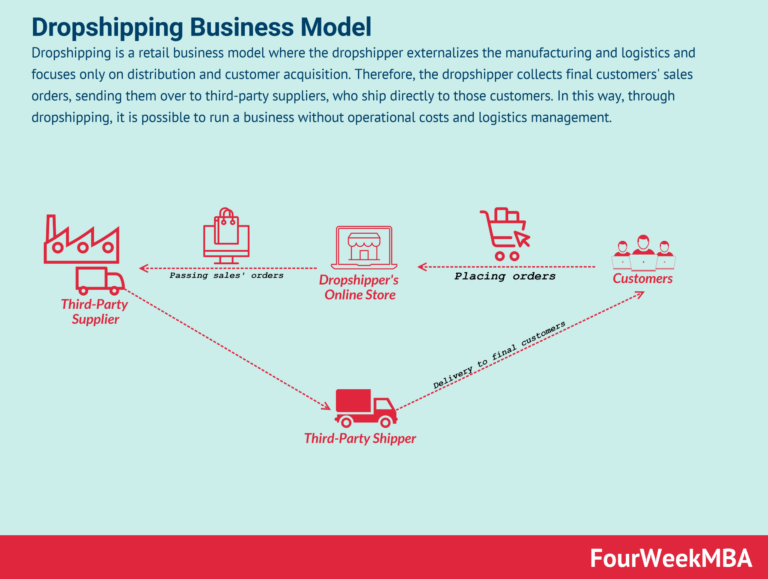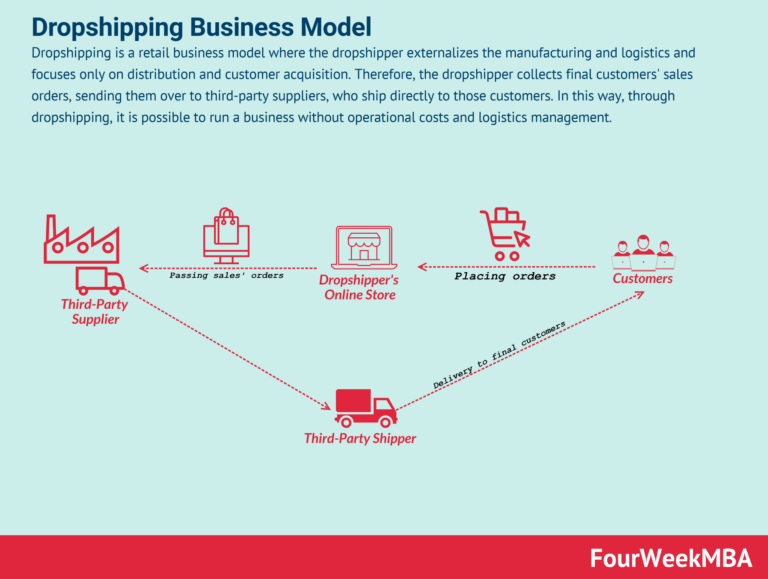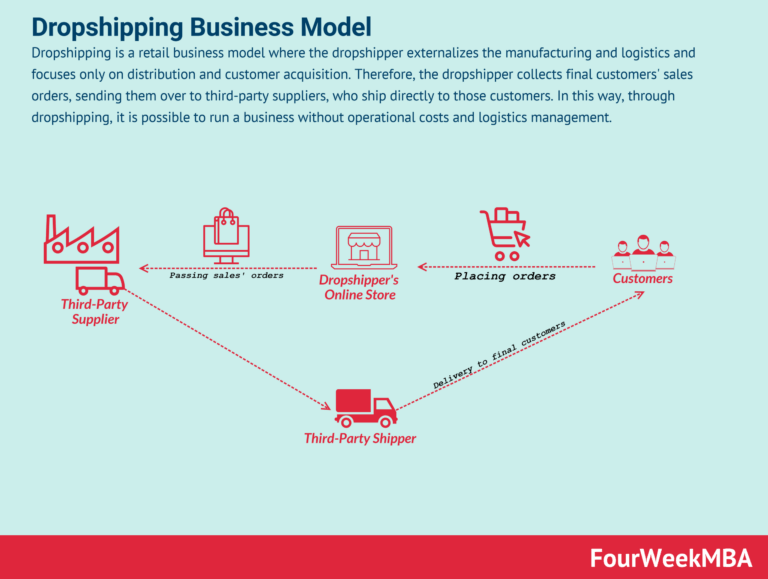The Ultimate Dropshipping Guide for Beginners (Auto Dropshipping)
Your Complete Guide to auto dropshipping
Introduction to Auto Dropshipping
Congratulations on taking the first step toward entrepreneurship! If you’re reading this, chances are you’re eager to dive into the world of online business, and you’re not alone. Many aspiring entrepreneurs dream of starting their own venture, but the path can seem daunting. Fortunately, dropshipping offers a fantastic opportunity to turn that dream into reality with minimal investment.
So, what exactly is dropshipping? At its core, dropshipping is a retail fulfillment method where you don’t have to keep the products you sell in stock. Instead, when you sell a product, you purchase the item from a third party—usually a wholesaler or manufacturer—who then ships it directly to your customer. This means you can start an online store without the burden of inventory management or upfront costs for products. The appeal of dropshipping lies in its low startup costs, flexibility, and the ability to operate from anywhere with an internet connection.
In this comprehensive guide to auto dropshipping, we aim to equip you with everything you need to succeed. Whether you’re a complete novice or someone looking to streamline your existing business, we will provide you with a detailed roadmap. You will learn how to:
- Find Profitable Products: Discover winning products that are trending and in demand.
- Set Up Your Store: Utilize powerful tools to create an online store that’s ready for business in just minutes.
- Automate Your Processes: Implement automated systems to handle order fulfillment, inventory management, and customer communication, freeing up your time to focus on growth.
- Market Your Business: Explore effective marketing strategies to drive traffic to your store and convert visitors into paying customers.
- Make Your First Sale: Get actionable tips on closing that crucial first sale, setting the stage for long-term success.
This guide is designed to provide you with clear, actionable steps to help you navigate the complexities of dropshipping. With the right tools and strategies, you can build a thriving business that not only generates income but also fulfills your entrepreneurial aspirations.
Remember, every successful entrepreneur started where you are now—full of ambition and uncertainty. By following this guide, you are taking significant strides toward turning your entrepreneurial dream into a tangible reality. So, let’s embark on this exciting journey together and unlock your potential in the world of auto dropshipping!
What You’ll Learn In This Guide
- Your Complete Guide to auto dropshipping
- How Does Dropshipping Actually Work? A Step-by-Step Breakdown
- The Pros and Cons of Dropshipping: Is It Right for You?
- Step 1: Finding a Profitable Niche and Winning Products
- Step 2: Choosing the Right Dropshipping Suppliers
- Step 3: Building Your Online Store
- Step 4: Marketing Your Dropshipping Business to Get Sales
- Common Mistakes to Avoid as a Beginner
- Frequently Asked Questions (FAQs) about auto dropshipping
- Conclusion: Your Next Steps to Launching Your Business
- Important Disclaimer
How Does Dropshipping Actually Work? A Step-by-Step Breakdown
Understanding the Dropshipping Model
Dropshipping is a popular e-commerce model that allows you to run an online store without holding any inventory. Instead, you act as the middleman between customers and suppliers. Here’s a step-by-step breakdown of how this process works, along with the flow of money and goods.
1. Customer Places an Order on Your Online Store
The journey begins when a customer visits your online store and decides to make a purchase. They select a product, add it to their cart, and proceed to checkout. At this point, they provide their shipping information and payment details.
Analogy: Think of your online store as a digital storefront. Just like a physical store attracts customers, your website showcases the products available for purchase.
2. You Receive the Payment
Once the customer completes the checkout process, you receive the payment for the order. This amount typically includes the retail price of the product, plus any applicable shipping fees and taxes. It’s crucial to ensure that your payment processing system is secure and efficient to build trust with your customers.
Flow of Money: At this stage, the money flows from the customer to your business. This is your revenue, but remember, it’s not pure profit yet, as you will have costs to cover.
3. You Forward the Order to Your Supplier
After receiving the payment, your next step is to forward the order details to your chosen supplier. This involves sending them the product information, customer address, and any other necessary details. Many dropshipping platforms, like AutoDS, streamline this process, allowing you to automate order forwarding with just a click.
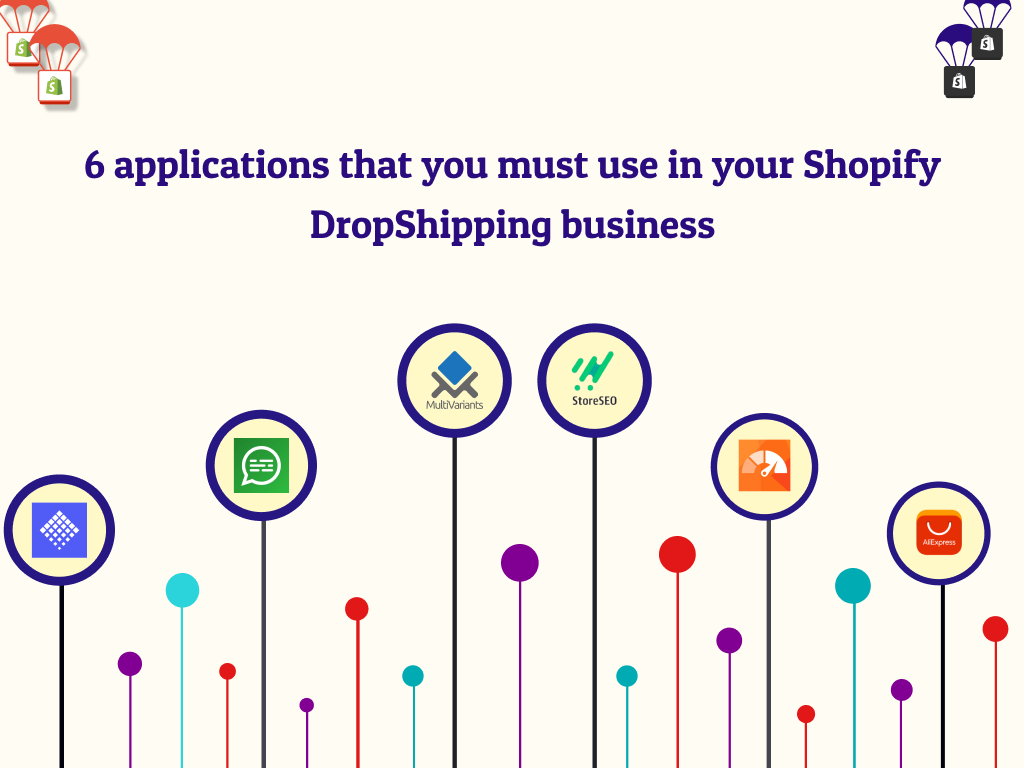
Tip: Choose suppliers who are reliable and have a good track record of delivering quality products on time. This will help maintain customer satisfaction and reduce returns.
4. The Supplier Ships the Product Directly to the Customer
Once the supplier receives the order, they take care of packaging and shipping the product directly to your customer. As the store owner, you don’t handle the product at any point in this process. The supplier often provides tracking information, which you can share with your customer to keep them updated.
Flow of Goods: Here, the product moves from the supplier’s warehouse directly to the customer’s doorstep. Your role is to facilitate this transaction without ever touching the inventory.
The Financial Flow
To clarify the financial aspect, let’s break down the cash flow:
– Customer Payment: The customer pays you the retail price (let’s say $50).
– Supplier Cost: You then pay the supplier the wholesale price for the product (let’s say $30).
– Your Profit: The difference ($20) is your profit, minus any additional costs like transaction fees or advertising.
Conclusion
By understanding these steps, you can effectively manage your dropshipping business. The beauty of this model lies in its simplicity and low upfront investment. You can focus on marketing, customer service, and growing your brand while your suppliers handle inventory and shipping logistics.
Remember, success in dropshipping requires diligence in choosing products, suppliers, and crafting an engaging online presence. Embrace the learning curve and enjoy the journey of building your online business!
The Pros and Cons of Dropshipping: Is It Right for You?
| ### Advantages of Dropshipping (Pros) | Challenges of Dropshipping (Cons) |
|---|---|
| Low Financial Risk: No need to invest heavily in inventory upfront, reducing the risk of loss. | Low Profit Margins: Typically, dropshippers operate on thin margins, which can be as low as 10-30%. |
| Flexibility and Scalability: Easily scale your business without worrying about warehousing or logistics. | High Competition: The low barrier to entry means many sellers may compete in the same niche, making it harder to stand out. |
| Wide Product Selection: Access to a vast range of products from various suppliers, allowing for diverse offerings. | Supplier Reliability: Your business depends on suppliers for quality and delivery; unreliable suppliers can harm your reputation. |
| Location Independence: Operate your business from anywhere in the world, as long as you have internet access. | Customer Service Challenges: Handling customer service can be complicated, especially when dealing with third-party suppliers. |
| Easy to Start: Setting up a dropshipping business is relatively simple and requires minimal technical skills. | Order Fulfillment Delays: Shipping times can be longer, especially if suppliers are overseas, which may frustrate customers. |
| Automated Processes: Tools like AutoDS can streamline product listing, order fulfillment, and inventory management. | Limited Control Over Branding: Since products are shipped directly from suppliers, branding opportunities may be limited. |
Expanding on the Advantages
One of the most compelling advantages of dropshipping is its low financial risk. For aspiring entrepreneurs, the thought of investing significant capital into inventory can be daunting. With dropshipping, you can start an online business without having to pre-purchase products, allowing you to test different markets and products with minimal risk. This model is particularly beneficial for beginners who may not yet have a clear understanding of what products will sell well.
Another significant advantage is the flexibility and scalability that dropshipping offers. As your business grows, you can quickly add new products to your store without worrying about excess inventory or storage costs. This agility allows you to respond to market trends and customer preferences more effectively than traditional retail models.
The wide product selection available through dropshipping means you can cater to various niches and target multiple customer segments. With access to numerous suppliers, you can offer an extensive range of products without the constraints of physical inventory. This variety not only helps attract different customers but also enables you to pivot quickly if a certain product or niche isn’t performing well.
Expanding on the Challenges
Despite its many benefits, dropshipping comes with notable challenges, particularly low profit margins. Because many dropshippers sell similar products, competition drives prices down, squeezing margins. You may find yourself working hard to make sales, only to see minimal profits. This reality necessitates a focus on volume and effective marketing strategies to achieve sustainable growth.
Another significant hurdle is high competition. The ease of entry into the dropshipping space means that many entrepreneurs are vying for the same customers. To succeed, you’ll need to differentiate your brand and find unique selling propositions that resonate with your target audience. This could involve niche marketing, exceptional customer service, or unique product offerings.
Moreover, supplier reliability is a critical factor in the dropshipping model. Your business reputation hinges on your suppliers’ performance, including product quality and shipping times. If a supplier fails to deliver on time or sends damaged goods, it’s your business that suffers. Establishing relationships with trustworthy suppliers and continuously monitoring their performance is essential to mitigate these risks.
In conclusion, while dropshipping presents an accessible pathway into the world of e-commerce with its low financial risk and operational flexibility, it is not without its challenges. Aspiring entrepreneurs must weigh these pros and cons carefully, develop robust strategies, and remain adaptable to succeed in this competitive landscape. With the right approach and tools, such as those offered by platforms like AutoDS, you can navigate the complexities of dropshipping and build a thriving online business.
Step 1: Finding a Profitable Niche and Winning Products
What Makes a Good Niche?
Finding a profitable niche is one of the most critical steps in starting a successful dropshipping business. A good niche should meet several criteria:
-
Passion and Interest: Ideally, you should choose a niche that aligns with your interests or passions. This makes it easier to stay motivated and engaged in your business.
-
Market Demand: There should be a clear demand for the products within your niche. Use tools like Google Trends to analyze search interest over time and identify if the niche is growing, stable, or declining.
-
Competition Level: Evaluate the competition in your niche. A highly competitive niche may be harder to penetrate, while a niche with little competition might indicate a lack of demand. Aim for a balanced niche where you can differentiate yourself.
-
Profit Margins: Look for niches where you can maintain healthy profit margins. Generally, products should have a markup of at least 30-50% to cover costs and provide a sustainable income.
-
Target Audience: Clearly define your target audience. Understanding your customers’ demographics, preferences, and shopping habits is essential for effective marketing and product selection.
How to Brainstorm Niche Ideas
Brainstorming niche ideas can be an exciting yet daunting task. Here are some effective strategies to generate niche ideas:
-
Personal Interests and Hobbies: Start by listing your hobbies, interests, and areas of expertise. Consider how these can translate into a product or service that others might want.
-
Marketplaces and Supplier Platforms: Explore platforms like AutoDS, AliExpress, or Amazon to identify trending products. Look for categories that pique your interest, and note products with high sales volumes and positive reviews.
-
Social Media and Trend Analysis: Utilize social media platforms like TikTok, Instagram, and Pinterest to spot emerging trends. Look for viral products or hashtags related to your potential niches. Tools like TikTok’s “For You” page can reveal what’s currently popular.
-
Online Forums and Communities: Engage in forums like Reddit or Quora to see what people are discussing. Identify common problems or needs that you can address with your products.
-
Keyword Research: Use keyword research tools like Ubersuggest or Google Keyword Planner to find popular search terms related to potential niches. This can help you identify what products people are actively looking for.
-
Competitor Analysis: Analyze successful dropshipping stores in your areas of interest. Look for gaps in their offerings or areas where you can provide a unique angle or better customer service.
Validating Your Niche
Once you’ve generated a list of potential niches, it’s crucial to validate them to ensure there’s a viable market. Here are steps to validate your niche:
-
Conduct Surveys: Use tools like Google Forms or SurveyMonkey to gather feedback from potential customers. Ask about their interests, pain points, and willingness to purchase products in your niche.
-
Analyze Competitor Performance: Study your competitors’ sales performance. Platforms like SimilarWeb can provide insights into traffic and engagement metrics, helping you gauge their success.
-
Test Product Listings: Create simple listings on platforms like eBay or Etsy without investing heavily in inventory. Monitor interest and engagement to see if there’s sufficient demand.
-
Evaluate Marketplaces: Check how many similar products are available in your niche on platforms like Amazon. A high volume of sales but few listings might indicate a great opportunity.
-
Use Google Trends: Monitor the trend data for your niche over time. Look for consistent interest or growth patterns rather than spikes that suggest a fleeting trend.
-
Engage with Your Audience: Join social media groups or online communities related to your niche. Engage with potential customers to understand their needs better and get direct feedback on your ideas.
Methods for Finding Winning Products
Finding winning products is essential for a successful dropshipping business. Here are some methods to identify those products:
-
Utilize Product Research Tools: Leverage tools like AutoDS’s product finder or other dropshipping platforms that aggregate data on trending products. These tools can help you discover products that are currently selling well across multiple suppliers.
-
Analyze Social Media Trends: Keep an eye on trending hashtags and viral products on platforms like TikTok, Instagram, and Pinterest. Look for products that have gained significant traction and engagement.
-
Supplier Marketplaces: Explore supplier marketplaces to find trending items. Look for products with high order volumes and positive reviews. Platforms like AliExpress also provide insights into which items are currently bestsellers.
-
Criteria for Winning Products:
- Price Point: Aim for products priced between $15 and $50. This range often strikes a balance between affordability for consumers and good margins for you.
- Unique Selling Proposition (USP): Choose products that solve a specific problem or offer something unique that isn’t easily found in local stores.
- Lightweight and Low Shipping Costs: Select products that are easy to ship to minimize logistics costs and improve profit margins.
-
Not Easily Available in Local Stores: Focus on products that customers might have difficulty finding in brick-and-mortar shops, thus increasing their likelihood of purchasing online.
-
Seasonal Trends: Be aware of seasonal trends and holidays. Products that align with these events can see spikes in sales. Use an eCommerce calendar to plan your product launches accordingly.
-
Customer Feedback and Reviews: Pay attention to customer reviews on competitor sites. Identify common complaints or suggestions that you can address with your offerings.
Conclusion
Finding a profitable niche and winning products is a foundational step in building your dropshipping business. By understanding what makes a good niche, brainstorming effectively, validating your ideas, and employing strategic methods to find winning products, you can set yourself up for success. Remember, the key is to stay curious, adapt to market changes, and focus on providing value to your customers. With dedication and the right tools at your disposal, you can create a thriving online business.
Step 2: Choosing the Right Dropshipping Suppliers
Understanding the Importance of Reliable Dropshipping Suppliers
Choosing the right dropshipping suppliers is a critical step in your e-commerce journey. Your supplier is the backbone of your business, affecting everything from product quality to shipping times and customer satisfaction. A reliable supplier can mean the difference between a thriving business and a disappointing venture. Here’s how to navigate the landscape of dropshipping suppliers effectively.
AliExpress
Pros:
- Wide Range of Products: AliExpress offers an extensive catalog of products across numerous categories, making it easy to find items that fit your niche.
- Low Prices: Many suppliers on AliExpress offer competitive prices, allowing you to maintain healthy profit margins.
- No Minimum Orders: You can order products one at a time, which is perfect for dropshipping, where inventory management can be a challenge.
Cons:
- Shipping Times: Depending on the supplier’s location, shipping can take a long time (often 2-4 weeks), which might frustrate customers expecting quicker delivery.
- Variable Quality: The quality of products can vary significantly between suppliers, necessitating thorough vetting.
- Customer Service Challenges: Communication with suppliers may sometimes be difficult due to language barriers or time zone differences.
CJ Dropshipping
Pros:
- Faster Shipping Options: CJ Dropshipping has warehouses in multiple locations, including the USA and Europe, offering faster shipping times compared to AliExpress.
- Quality Control: They have a strict vetting process for their suppliers, ensuring better product quality.
- Custom Branding: CJ Dropshipping allows you to customize packaging, which can enhance your brand image.
Cons:
- Higher Prices: While the quality is generally better, prices can be higher compared to AliExpress, which may impact your profit margins.
- Complexity in Setup: The platform can be somewhat more complicated to navigate for beginners compared to AliExpress.
- Limited Product Range: Although they are expanding, the product range might not be as extensive as AliExpress.
USA-Based Suppliers
Pros:
- Fast Shipping: Suppliers based in the USA typically offer significantly faster shipping times, often within a few days, which can enhance customer satisfaction.
- Easier Returns: Handling returns and exchanges is generally easier when dealing with local suppliers, improving your customer service experience.
- Quality Assurance: USA-based suppliers often have stricter quality control measures, leading to better product consistency.
Cons:
- Higher Costs: Products from US suppliers can be more expensive, which may require you to adjust your pricing strategy.
- Limited Variety: Depending on your niche, the variety of products may be less extensive than international platforms.
- Fewer Suppliers: There are fewer dropshipping suppliers in the USA compared to global platforms like AliExpress.
What to Look for in a Good Supplier
When vetting potential dropshipping suppliers, consider the following checklist:
- Communication:
- Is the supplier responsive to inquiries?
-
Do they communicate clearly and professionally?
-
Shipping Times:
- What are the average shipping times for products?
-
Are there expedited shipping options available?
-
Product Quality:
- Can you find reviews or testimonials about the product quality?
-
Is there a sample option to evaluate product quality before selling?
-
Return Policies:
- What is the supplier’s return policy?
-
Are there restocking fees or other penalties for returns?
-
Pricing:
- Are the prices competitive?
-
Is there room for profit margins after factoring in shipping and other costs?
-
Inventory Levels:
- Does the supplier maintain consistent inventory levels?
-
Are they transparent about stock availability?
-
Integration Capabilities:
- Does the supplier integrate easily with your e-commerce platform (e.g., Shopify, WooCommerce)?
-
Are there tools available for order tracking and fulfillment automation?
-
Reputation:
- What do other dropshippers say about the supplier?
- Are they known for reliability and quality service?
Conclusion
Selecting the right dropshipping supplier is a pivotal decision that can shape the success of your online business. By evaluating platforms like AliExpress, CJ Dropshipping, and USA-based suppliers, and utilizing the checklist provided, you can make informed choices that align with your business goals. Remember, taking the time to find reliable suppliers is an investment in your future success as an entrepreneur. Stay persistent, keep learning, and soon you’ll be on your way to building a thriving dropshipping business.
Step 3: Building Your Online Store
Getting Started with Shopify for Your Dropshipping Business
Building your online store is an exciting step in your dropshipping journey. Shopify is one of the most popular e-commerce platforms, known for its user-friendly interface and powerful features tailored for beginners and experienced entrepreneurs alike. In this guide, we’ll walk you through the essential steps to set up your Shopify store effectively.
1. Choosing a Shopify Plan
Before diving into the design and functionality of your store, you need to choose a suitable Shopify plan. Shopify offers several pricing tiers, including:
- Basic Shopify: Ideal for beginners, offering essential features to get started.
- Shopify: Includes additional features like professional reports, perfect for growing businesses.
- Advanced Shopify: Best for established businesses that require advanced reporting and lower transaction fees.
Start with the Basic plan if you’re just beginning; you can always upgrade later as your business grows. Shopify also offers a 14-day free trial, allowing you to explore the platform before committing.
2. Picking a Theme
Once you’ve selected your plan, it’s time to choose a theme for your store. A well-designed theme enhances your brand’s image and can significantly impact conversions. Here’s how to pick the right theme:
- Explore the Shopify Theme Store: Browse through both free and paid themes. Look for designs that resonate with your target audience and niche.
- Mobile Responsiveness: Ensure your chosen theme is mobile-friendly. A significant portion of online shopping occurs on mobile devices.
- Customization Options: Select a theme that allows for easy customization. You want to be able to modify colors, fonts, and layouts without needing advanced coding skills.
Once you’ve chosen a theme, install it and customize it to reflect your brand identity.
3. Setting Up Essential Pages
Creating essential pages is crucial for building trust and providing information to your customers. Here are the key pages to set up:
- About Us: Share your story, mission, and what makes your store unique. This helps build a connection with your audience.
- Contact Page: Provide multiple ways for customers to reach you, such as email, phone number, and a contact form. Quick responses foster trust.
- Policies: Clearly outline your store policies, including shipping, returns, and privacy policies. Transparency is vital for customer satisfaction.
You can find templates for these pages online or use Shopify’s built-in tools to create them easily.
4. Installing Key Apps
To optimize your dropshipping experience, installing essential apps is a must. Here are a few recommended apps to consider:
- Product Import Tools: Apps like DSers or CJ Dropshipping allow you to import products from suppliers directly into your store. They simplify the process of adding products and managing inventory.
- Order Fulfillment Apps: Tools like AutoDS automate order fulfillment, tracking updates, and inventory management, saving you time and reducing errors.
- Email Marketing Apps: Consider apps like Klaviyo or Mailchimp for setting up email campaigns and newsletters to keep your customers engaged.
To install an app, visit the Shopify App Store, search for the app, and click “Add app.” Follow the prompts to integrate it into your store seamlessly.
5. Setting Up Payment Gateways
Enabling payment gateways is essential for processing transactions on your store. Shopify supports multiple payment options, including:
- Shopify Payments: The most straightforward option, allowing you to accept credit cards directly.
- PayPal: A widely trusted payment option that many customers prefer.
- Third-party gateways: Options like Stripe, Authorize.Net, or Square can also be integrated.
To set up payment gateways:
- Go to your Shopify admin panel.
- Click on “Settings” and then “Payments.”
- Choose your preferred payment methods and follow the setup instructions.
Ensure that you test your payment process to guarantee a smooth customer experience.
Exploring WooCommerce as an Alternative
While Shopify is an excellent choice for many, WooCommerce is a robust alternative, especially for those who prefer using WordPress. It offers extensive customization options and flexibility but requires more technical knowledge to set up and manage. If you’re comfortable with WordPress, it can be a powerful platform for your dropshipping business.
Conclusion
Setting up your online store on Shopify is a manageable process that can be completed in a few steps. By choosing the right plan, theme, and essential apps, and by establishing necessary pages and payment gateways, you’ll be well on your way to launching a successful dropshipping business. Remember, the key to success lies in continually optimizing your store and staying updated with market trends. Embrace the journey, and don’t hesitate to seek help or resources as you grow your online venture!
Step 4: Marketing Your Dropshipping Business to Get Sales
Social Media Marketing (TikTok & Instagram)
Social media platforms like TikTok and Instagram are essential for reaching a wide audience and driving traffic to your dropshipping store. Here are actionable strategies to leverage these platforms effectively:
1. Create Engaging Content
- Tip: Focus on creating visually appealing content that showcases your products in action. Use high-quality images, videos, and engaging captions.
- Example: If you sell fitness gear, create a series of workout videos demonstrating how to use your products effectively.
2. Utilize Influencer Marketing
- Tip: Partner with micro-influencers (those with 1,000 to 100,000 followers) in your niche. They often have a more engaged audience and can provide authentic promotion.
- Example: Send your products to fitness influencers and ask them to showcase your gear in their workouts or reviews.
3. Use Stories and Reels
- Tip: Regularly post Stories and Reels to keep your audience engaged. These formats are favored by algorithms and can significantly increase your visibility.
- Example: Create a “behind-the-scenes” series showing how your products are made, packaged, or shipped, or host Q&A sessions about your brand.
4. Engage with Your Audience
- Tip: Respond to comments and messages promptly. Engaging with your audience builds trust and encourages them to share your content.
- Example: Run polls or ask questions in your Stories to get feedback on new products or customer preferences.
5. Leverage Hashtags Wisely
- Tip: Use relevant hashtags to increase the discoverability of your posts. Research trending hashtags in your niche for maximum reach.
- Example: For a home decor store, use hashtags like #HomeDecor, #InteriorDesign, and #DIYHome to attract users interested in home improvement.
Paid Advertising (Facebook/Instagram Ads)
Paid advertising on platforms like Facebook and Instagram can yield quick results. Here’s how to get started effectively:
1. Define Your Target Audience
- Tip: Use Facebook’s Audience Insights tool to analyze your potential customers and tailor your ads based on demographics, interests, and behaviors.
- Example: If you sell eco-friendly products, target audiences interested in sustainability, organic products, and green living.
2. A/B Test Your Ads
- Tip: Run A/B tests on different ad creatives, headlines, and calls to action to determine what resonates best with your audience.
- Example: Create two versions of an ad featuring the same product but with different images—one showing the product in use and another showcasing it in a stylized setting.
3. Utilize Retargeting Campaigns
- Tip: Set up retargeting ads to reach users who have visited your store but didn’t make a purchase. This can help convert interested visitors into buyers.
- Example: Show ads for products users viewed but didn’t purchase, perhaps with a limited-time discount to encourage them to buy.
4. Optimize Your Landing Page
- Tip: Ensure that the landing page where users arrive after clicking your ad is optimized for conversions. It should be visually appealing, load quickly, and have a clear call to action.
- Example: If your ad promotes a specific product, ensure the landing page features that product prominently with a clear “Buy Now” button.
5. Monitor and Adjust Your Campaigns
- Tip: Regularly check the performance of your ads and adjust your strategy based on data. Look at metrics like click-through rate (CTR) and conversion rate.
- Example: If an ad is performing well, consider increasing its budget. Conversely, pause ads that are underperforming to allocate resources more effectively.
Search Engine Optimization (SEO)
Optimizing your dropshipping store for search engines can drive organic traffic without the need for paid advertising. Here are steps to enhance your SEO:
1. Keyword Research
- Tip: Use tools like Google Keyword Planner or Ubersuggest to identify keywords related to your products that potential customers are searching for.
- Example: If you sell skincare products, target keywords like “best organic moisturizer” or “anti-aging serum” to attract relevant traffic.
2. Optimize Product Descriptions
- Tip: Write unique product descriptions that incorporate your target keywords naturally. Avoid copying manufacturer descriptions as this can hurt your SEO.
- Example: Instead of a generic description, detail the benefits of the product, how to use it, and why it stands out in the market.
3. Use Alt Tags for Images
- Tip: Always use descriptive alt tags for your images. This not only helps with SEO but also improves accessibility for visually impaired users.
- Example: Instead of using “image1.jpg,” use “organic-moisturizer-for-dry-skin.jpg” to improve search engine visibility.
4. Build Quality Backlinks
- Tip: Reach out to bloggers, influencers, or websites related to your niche to get backlinks to your store. Quality backlinks improve your search engine ranking.
- Example: Offer to write guest posts on beauty blogs, including a link to your store within the content.
5. Optimize for Mobile
- Tip: Ensure your website is mobile-friendly. A significant portion of online shopping occurs on mobile devices, and Google prioritizes mobile-friendly sites in rankings.
- Example: Test your site’s mobile version to ensure it loads quickly and that all buttons and links are easily accessible.
Email Marketing
Email marketing remains one of the most effective ways to communicate with your customers and drive sales. Here’s how to get started:
1. Build Your Email List
- Tip: Use pop-ups or sign-up forms on your website offering discounts or exclusive content to encourage visitors to subscribe.
- Example: Offer a 10% discount on the first purchase for users who sign up for your newsletter.
2. Segment Your Audience
- Tip: Segment your email list based on customer behavior, such as past purchases or browsing history, to send targeted campaigns.
- Example: Send a re-engagement email to customers who haven’t purchased in a while, offering them a special deal on products they previously viewed.
3. Create Compelling Content
- Tip: Ensure your emails provide value—whether through educational content, exclusive promotions, or product highlights.
- Example: Send a monthly newsletter featuring tips on using your products effectively, along with customer testimonials and new arrivals.
4. Automate Your Campaigns
- Tip: Use email marketing tools like Mailchimp or Klaviyo to automate welcome emails, abandoned cart reminders, and post-purchase follow-ups.
- Example: Set up an automated email to remind customers about items left in their cart, possibly including a discount to encourage them to complete the purchase.
5. Analyze and Optimize
- Tip: Regularly review your email marketing metrics, such as open rates, click-through rates, and conversion rates, to identify areas for improvement.
- Example: If you notice low open rates, test different subject lines or send times to find what resonates best with your audience.
By implementing these marketing strategies, you can effectively promote your dropshipping business and drive traffic to your store. Remember, consistency is key; continually test, analyze, and refine your strategies to achieve the best results.
Common Mistakes to Avoid as a Beginner
1. Choosing a Bad Niche
One of the most significant mistakes beginners make is selecting a niche that is either too saturated or lacks demand. A niche that is overly competitive can make it challenging to stand out, while a niche with insufficient interest can lead to poor sales.
Solution: Conduct thorough market research using tools like Google Trends, social media insights, and keyword analysis to identify trending products. Look for niches that not only interest you but also show potential for profitability. Aim for a balance between competition and demand.
2. Not Testing Products
Many beginners jump into selling products without testing their market viability first. This can lead to wasted time and resources on items that don’t resonate with customers.
Solution: Utilize a small-scale testing strategy before fully committing to a product. Start by running ads with a limited budget to gauge interest and sales. Tools like AutoDS can help you quickly import and test multiple products to find winning items.
3. Poor Customer Service
In the world of dropshipping, excellent customer service is critical. Beginners often overlook this aspect, leading to negative customer experiences and damage to their brand reputation.
Solution: Make customer service a priority by establishing clear communication channels. Respond to inquiries promptly and handle complaints efficiently. Consider using automated responses for common questions while ensuring personalized follow-ups for unique issues.
4. Ignoring Shipping Times
Long shipping times can deter customers, especially in an age where fast delivery is expected. Beginners often underestimate the importance of logistics and fail to communicate shipping times effectively.
Solution: Choose reliable suppliers with reasonable shipping times and communicate these clearly on your product pages. Consider using services that offer faster fulfillment options. Transparency about shipping times can help manage customer expectations and reduce complaints.
5. Unrealistic Profit Expectations
Many new dropshippers enter the business with the belief that they will make substantial profits quickly. This unrealistic mindset can lead to disappointment and hasty decision-making.
Solution: Educate yourself on the typical profit margins in dropshipping, which often range from 10% to 30%. Set realistic financial goals and understand that building a successful dropshipping business takes time and effort. Use tools like profit calculators to better understand your margins.
6. Neglecting Marketing Strategies
Some beginners assume that merely listing products online is enough for sales to flow in. This misconception can lead to stagnation and lack of visibility.
Solution: Develop a comprehensive marketing strategy that includes social media marketing, content marketing, and paid advertising. Leverage platforms like Instagram and TikTok to showcase your products and engage with potential customers. Utilize AutoDS’s ad spy tools to analyze successful campaigns and adapt your strategy accordingly.
7. Failing to Optimize Product Listings
Many beginners do not pay enough attention to their product descriptions, images, and titles. Poorly optimized listings can lead to lower search visibility and conversion rates.
Solution: Invest time in creating compelling product titles and descriptions that include relevant keywords. Use high-quality images and consider adding customer reviews to build trust. AutoDS offers AI-generated product titles and descriptions, which can save you time and improve your listings.
8. Overcomplicating Operations
New dropshippers often try to manage every aspect of their business manually, which can lead to burnout and inefficiencies.
Solution: Embrace automation tools to streamline your operations. Platforms like AutoDS offer features for automating order fulfillment, inventory management, and tracking updates. This allows you to focus more on marketing and customer engagement rather than tedious administrative tasks.
9. Not Analyzing Performance Metrics
Beginners frequently overlook the importance of tracking their store’s performance metrics. Without proper analysis, it’s challenging to identify what’s working and what needs improvement.
Solution: Use analytics tools to monitor key performance indicators (KPIs) such as conversion rates, traffic sources, and average order value. Regularly review these metrics to make informed decisions about your product offerings and marketing strategies.
10. Ignoring Legal Considerations
Many new entrepreneurs dive into dropshipping without understanding the legal implications, which can lead to significant issues down the line.
Solution: Research the legal requirements for running an e-commerce business in your region. This includes understanding tax obligations, copyright issues, and consumer protection laws. Consulting with a legal expert can save you from potential pitfalls and ensure compliance.
By avoiding these common mistakes, you can set a solid foundation for your dropshipping business and increase your chances of success. Remember, every setback is an opportunity to learn and grow, so stay persistent and adaptive in your journey.
Frequently Asked Questions (FAQs) about auto dropshipping
1. What is auto dropshipping?
Auto dropshipping is a streamlined approach to the traditional dropshipping model, where automation tools handle various aspects of the business, such as product sourcing, order fulfillment, and inventory management. This allows entrepreneurs to focus on marketing and customer engagement rather than tedious operational tasks, ultimately saving time and increasing efficiency.
2. How much money do I need to start an auto dropshipping business?
Starting an auto dropshipping business can require minimal investment. Many platforms offer free trials or low monthly fees (like AutoDS’s $1 for 14 days) that provide access to essential tools. You may need additional funds for a domain name, hosting, and marketing efforts. A budget of $200-$500 is often sufficient to get started, depending on your business goals.
3. Do I need to register a company to start dropshipping?
While you don’t necessarily need to register a formal business entity to start dropshipping, it’s highly recommended. Registering your business can provide legal protection, enhance your credibility, and allow you to open a business bank account. Check local regulations, as requirements may vary by location.
4. How do I handle returns in auto dropshipping?
Handling returns in auto dropshipping typically involves following the return policies of your suppliers. Most platforms, like AutoDS, automate the order fulfillment process, which includes handling returns. Always communicate your return policy clearly to customers and ensure that your suppliers have a reliable return process in place.
5. What are the advantages of using an auto dropshipping platform?
Auto dropshipping platforms offer numerous advantages, including automation of order processing, easy product importing, and access to a wide range of suppliers. These tools help reduce manual labor, minimize errors, and allow you to scale your business more effectively. Additionally, they provide insights into trending products and market demands, helping you make informed decisions.
6. How do I find winning products for my dropshipping store?
Finding winning products involves research and analysis of market trends. Use product research tools available on auto dropshipping platforms like AutoDS, which allow you to compare millions of trending products. You can also utilize ad spy tools to see what’s currently popular on social media platforms and leverage that information to select products that resonate with your target audience.
7. Can I use auto dropshipping with multiple sales channels?
Absolutely! Many auto dropshipping platforms are designed to integrate seamlessly with multiple sales channels, such as Shopify, eBay, Amazon, and more. This flexibility allows you to diversify your revenue streams and reach a broader audience, enhancing your overall business potential.
8. How do I market my auto dropshipping store?
Marketing your auto dropshipping store can be approached in several ways, including social media advertising, influencer partnerships, and content marketing. Start by identifying your target audience and utilizing platforms where they spend their time. You can create engaging content, run ads, or even leverage email marketing to reach potential customers effectively.
9. What are the common challenges in auto dropshipping, and how can I overcome them?
Common challenges include supplier reliability, product quality control, and inventory management. To overcome these, choose reputable suppliers, regularly monitor product reviews, and use automated tools to track inventory levels. Additionally, maintain open communication with your suppliers to address any issues promptly and keep your customers informed.
10. Is auto dropshipping suitable for beginners?
Yes, auto dropshipping is particularly suitable for beginners. The automation tools provided by platforms like AutoDS simplify the process, making it easier for newcomers to navigate the complexities of running an online store. With step-by-step guides, tutorials, and 24/7 support available, aspiring entrepreneurs can confidently start their dropshipping journey without feeling overwhelmed.
Conclusion: Your Next Steps to Launching Your Business
Take the Leap into Dropshipping Success
Starting your dropshipping journey is an exciting venture filled with opportunities. To kick off your business, follow these key steps:
-
Choose Your Niche: Select a niche that interests you and has a viable market. Research trending products and understand your target audience’s needs.
-
Set Up Your Store: Utilize platforms like AutoDS to create an AI-built Shopify store in just minutes. This streamlines your setup process, allowing you to focus on product selection and marketing.
-
Find Winning Products: Leverage product research tools to identify high-demand items. AutoDS offers access to over 8 million trending products, making it easier to source what sells.
-
Automate Your Operations: Implement automation tools to manage orders, inventory, and tracking. This reduces manual work and allows you to scale your business efficiently.
-
Market Your Store: Develop a marketing strategy to reach potential customers. Utilize social media platforms and ads to promote your products and drive traffic to your store.
-
Monitor and Optimize: Continuously track your sales and customer feedback. Use insights to refine your product offerings and marketing strategies.
Remember, dropshipping is not a get-rich-quick scheme; it requires dedication, learning, and perseverance. Success doesn’t happen overnight, but with consistent effort, you can build a thriving online business.
Your Journey Starts Today
Now is the time to take action. Don’t let fear or uncertainty hold you back. Embrace the learning curve, invest in your knowledge, and start your dropshipping journey today. Your future as a successful entrepreneur begins with that first step. Sign up for a trial with AutoDS, explore the tools available, and take the plunge into the world of dropshipping. Your dream of owning a successful online business is within reach—go for it!
Important Disclaimer
⚠️ Important Disclaimer
The information provided in this guide is for educational purposes only. Starting a business involves risks, and success is not guaranteed. Please conduct your own thorough research and consider consulting with financial and legal professionals before making any business decisions.

